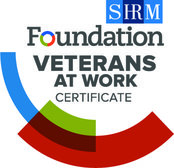Build Loyalty Within Your Company
Building Employee Loyalty in GovCon: Strategies for Success
In the dynamic realm of government contracting (GovCon), where acronyms abound, competition is fierce, coffee flows endlessly, and the demand for top-tier talent is insatiable, nurturing employee loyalty is not just an option – it’s a mission-critical imperative. GovCon comes with unique challenges and opportunities, and the retention of a committed team is paramount. So, let’s grab a cup of coffee and delve into the significance of employee loyalty and the strategies that can help build and sustain a steadfast workforce in GovCon.
Why Employee Loyalty Matters in GovCon
The GovCon sector often requires specialized skills and experiences, making the retention of valuable talent even more critical. Loyal employees are not only more likely to stay, but also to invest themselves emotionally in their roles, contributing to the success of the organization.
If you aren’t convinced yet, think of the financial implications for employee turnover. The cost of replacing an individual employee can range from 0.5 to 2 times the employee’s annual salary. (Gallup) That’s a compelling reason to prioritize retaining the talent you’ve worked hard to bring to your team.
Strategies for Building Employee Loyalty in GovCon
Cultivate a Strong Company Culture:
Your organizational culture serves as the foundation of employee loyalty. It should align with your core values and promote inclusivity, teamwork, and mutual support among colleagues. Consistently communicate your values throughout your operations, emphasizing transparency.
Understand and Meet Employee Needs:
Providing benefits and perks is essential, but they must align with your employees’ genuine needs. GovCon professionals seek challenges, recognition, opportunities for growth, and a work-life balance. Collaborate with your HR team to establish feedback mechanisms, such as surveys or discussions, to pinpoint these needs accurately.
Instill a Sense of Purpose:
GovCons play a unique role in serving the community and the nation. Regularly emphasize your company’s mission and highlight the real-world impact of your projects. Share success stories and informative articles to help employees connect their work to a larger purpose.
Prioritize Professional Development:
Invest in the growth and development of your employees. GovCon frequently demands specialized skills, making it imperative to provide training opportunities, skill enhancement programs, and clearly defined career advancement pathways. Regular feedback sessions can help employees gauge their progress within the organization.
Recognize and Reward Achievements:
Acknowledge and reward hard work and accomplishments. Implement a recognition program that celebrates individual and team successes. Recognition can take various forms, such as bonuses, promotions, public praise, or tokens of appreciation. Feeling valued and appreciated boosts morale and loyalty.
Offer Flexibility and Promote Work-Life Balance:
GovCon projects often entail demanding schedules. To bolster employee loyalty, offer flexible work arrangements, including options for remote work, flexible hours, or compressed workweeks. Encouraging a healthy work-life balance helps prevent burnout and fosters loyalty.
Effective Communication and Feedback:
Establish open channels of communication. Encourage employees to provide feedback on their experiences, concerns, and suggestions. Act on their feedback to make necessary improvements. Involving employees in decision-making processes enhances their sense of ownership and loyalty.
How BOOST Can Propel Your Recruiting and HR Efforts
Here at BOOST, we specialize in providing tailored back-office solutions for GovCon. Whether it’s recruiting the industry’s brightest talents or ensuring your current team remains steadfastly committed, we’re here to guide you. Contact Us today, and let’s discuss strategies customized to your unique needs.





